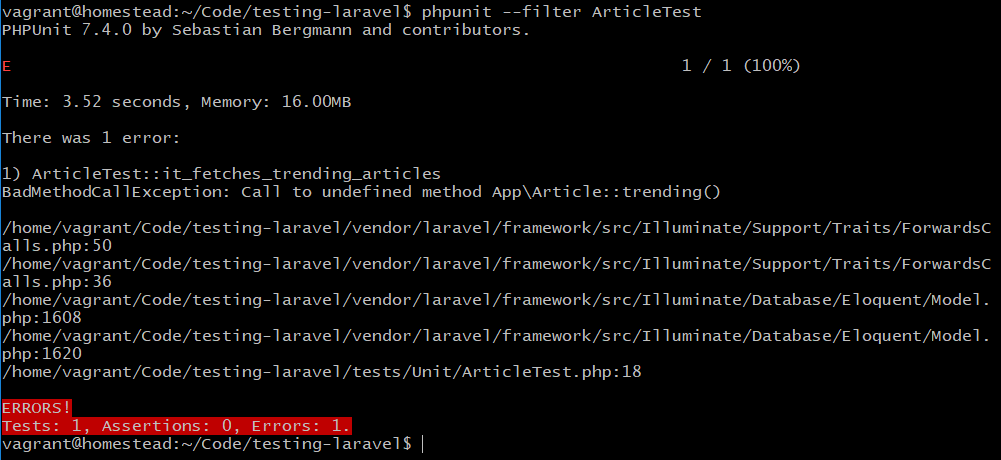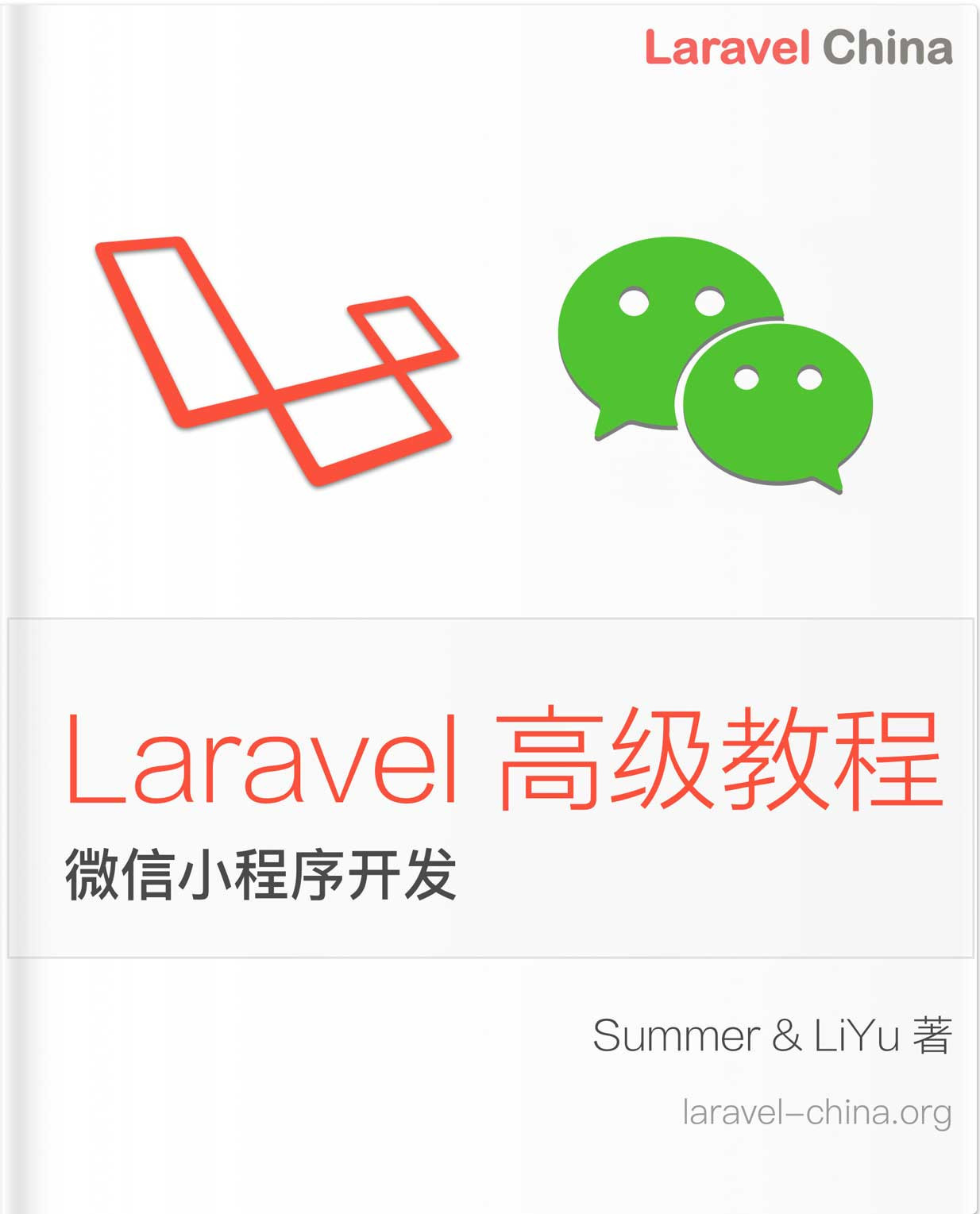4.测试 Eloquent 模型
本系列文章为
laracasts.com的系列视频教程——Testing Laravel 的学习笔记。若喜欢该系列视频,可去该网站订阅后下载该系列视频,支持正版。
本节说明
- 对应第 4 小节:Testing Eloquent Models
本节内容
本节我们来学习测试 Laravel 的Model。首先我们进行配置phpunit.xml文件:
phpunit.xml
.
.
.
<php>
<env name="APP_ENV" value="testing"/>
<env name="DB_CONNECTION" value="sqlite"/>
<env name="DB_DATABASE" value=":memory:"/>
<env name="BCRYPT_ROUNDS" value="4"/>
<env name="CACHE_DRIVER" value="array"/>
<env name="SESSION_DRIVER" value="array"/>
<env name="QUEUE_CONNECTION" value="sync"/>
<env name="MAIL_DRIVER" value="array"/>
</php>
</phpunit>我们在内存中进行测试,这样测试运行的速度会快一些,所以在 database 配置项中我们将使用 sqlite 和 :memory:选项(Sqlite的内存数据库)。
接下来我们建立Article模型和数据库迁移文件:
$ php artisan make:model Article -m修改迁移文件:
database\migrations{timestamp}_create_articles_table.php
<?php
use Illuminate\Support\Facades\Schema;
use Illuminate\Database\Schema\Blueprint;
use Illuminate\Database\Migrations\Migration;
class CreateArticlesTable extends Migration
{
/**
* Run the migrations.
*
* @return void
*/
public function up()
{
Schema::create('articles', function (Blueprint $table) {
$table->increments('id');
$table->string('title');
$table->integer('reads')->default(0);
$table->timestamps();
});
}
/**
* Reverse the migrations.
*
* @return void
*/
public function down()
{
Schema::dropIfExists('articles');
}
}
为了简单起见,我们仅定义了两个字段:title跟reads,即标题与阅读次数。然后我们新建测试:
$ php artisan make:test ArticleTest --unit建立模型工厂:
database\factories\ArticleFactory.php
<?php
use Faker\Generator as Faker;
/*
|--------------------------------------------------------------------------
| Model Factories
|--------------------------------------------------------------------------
|
| This directory should contain each of the model factory definitions for
| your application. Factories provide a convenient way to generate new
| model instances for testing / seeding your application's database.
|
*/
$factory->define(App\Article::class, function (Faker $faker) {
return [
'title' => $faker->sentence,
];
});
现在我们来建立我们的第一个测试,对于我们的测试而言,我们的测试逻辑如下:
tests\Unit\ArticleTest.php
/** @test */
public function it_fetches_trending_articles()
{
// Given
// When
// Then
}假设我们有一些数据,当我们执行了动作之后,我们需要验证什么。我们按照这个思路来编写测试:
<?php
use App\Article;
use Tests\TestCase;
use Illuminate\Foundation\Testing\RefreshDatabase;
class ArticleTest extends TestCase
{
use RefreshDatabase;
/** @test */
public function it_fetches_trending_articles()
{
factory('App\Article',2)->create();
factory('App\Article')->create(['reads' => 10]);
$mostPopular = factory('App\Article')->create(['reads' => 20]);
$articles = Article::trending();
$this->assertEquals($mostPopular->id,$articles->first()->id);
$this->assertCount(3,$articles);
}
}现在我们可以来运行测试了:
我们利用 本地作用域 来获取最流行的 3 篇文章:
app\Article.php
<?php
namespace App;
use Illuminate\Database\Eloquent\Model;
class Article extends Model
{
public function scopeTrending($query,$take = 3)
{
return $query->orderBy('reads','desc')->take($take)->get();
}
}
再次测试:
现在我们已经学习了测试model的一个小例子,正如这个例子而言,测试的内容单一:仅测试了能够获取流行的 3 篇文章,仅此而已。但是这样是必要的,因为你可以准确地通过你的测试定位到测试失败的位置。请记住,不要企图在一个测试中测试很多、很复杂的东西,那样会得不偿失。

 Testing Laravel 单元测试入门笔记
Testing Laravel 单元测试入门笔记



 关于 LearnKu
关于 LearnKu




推荐文章: